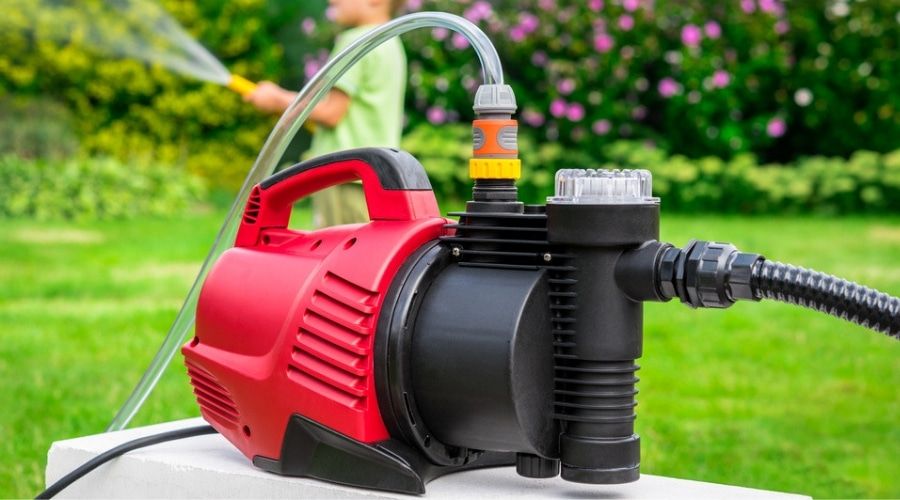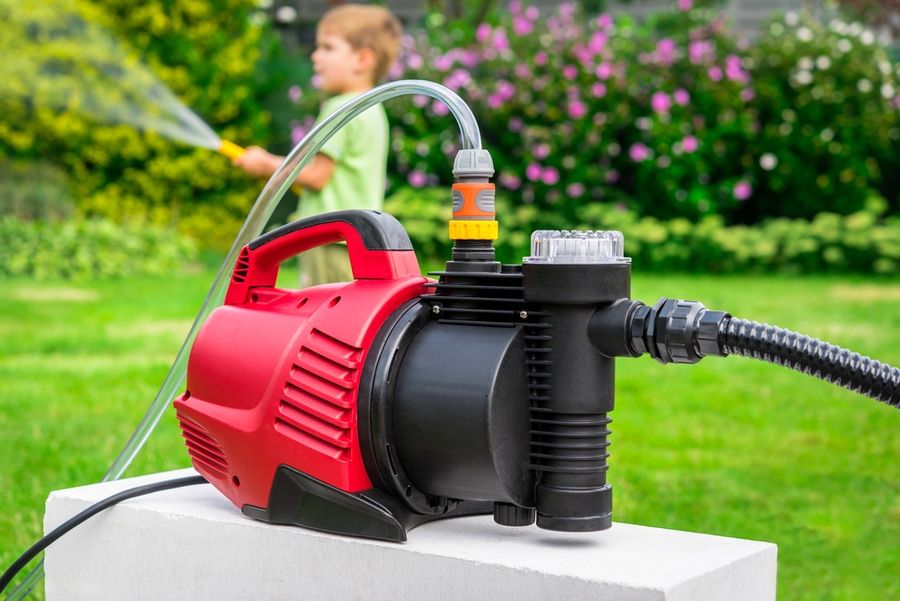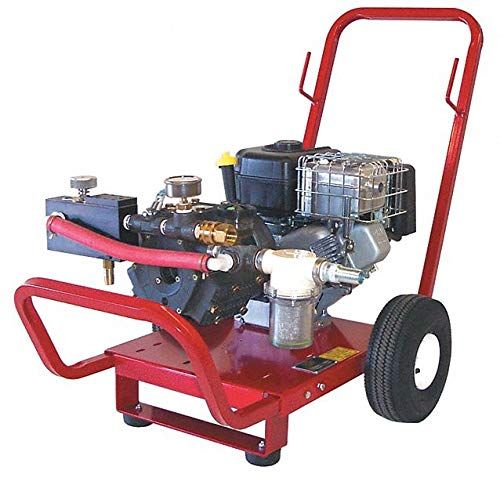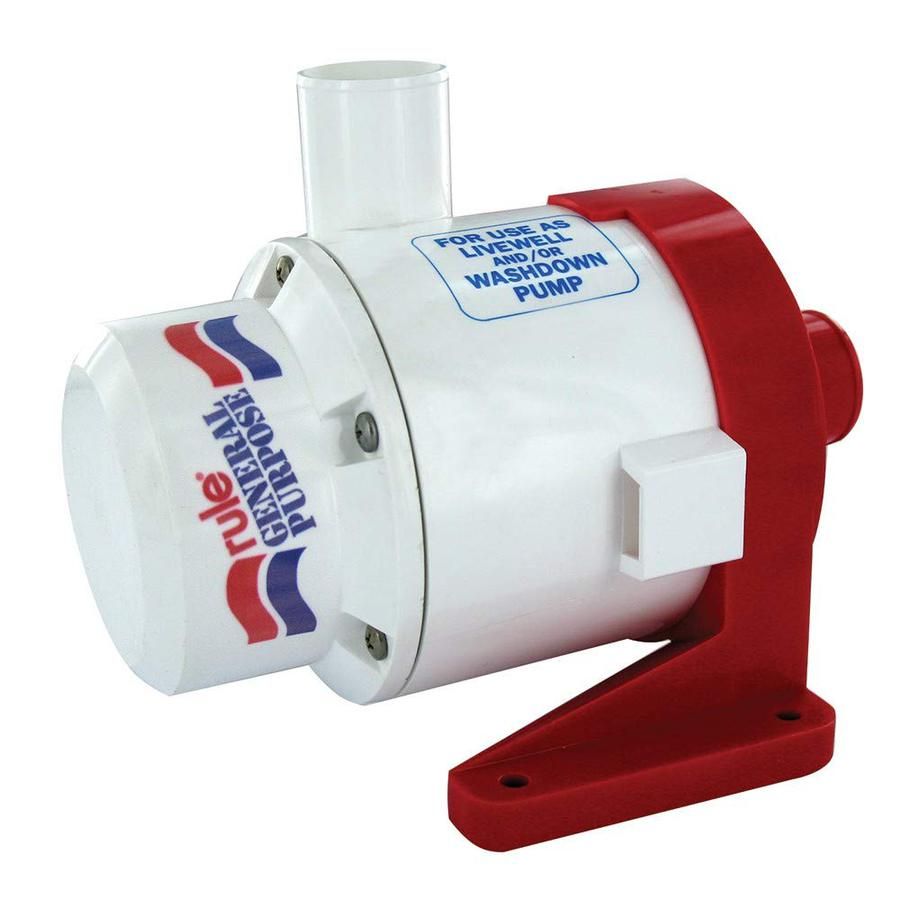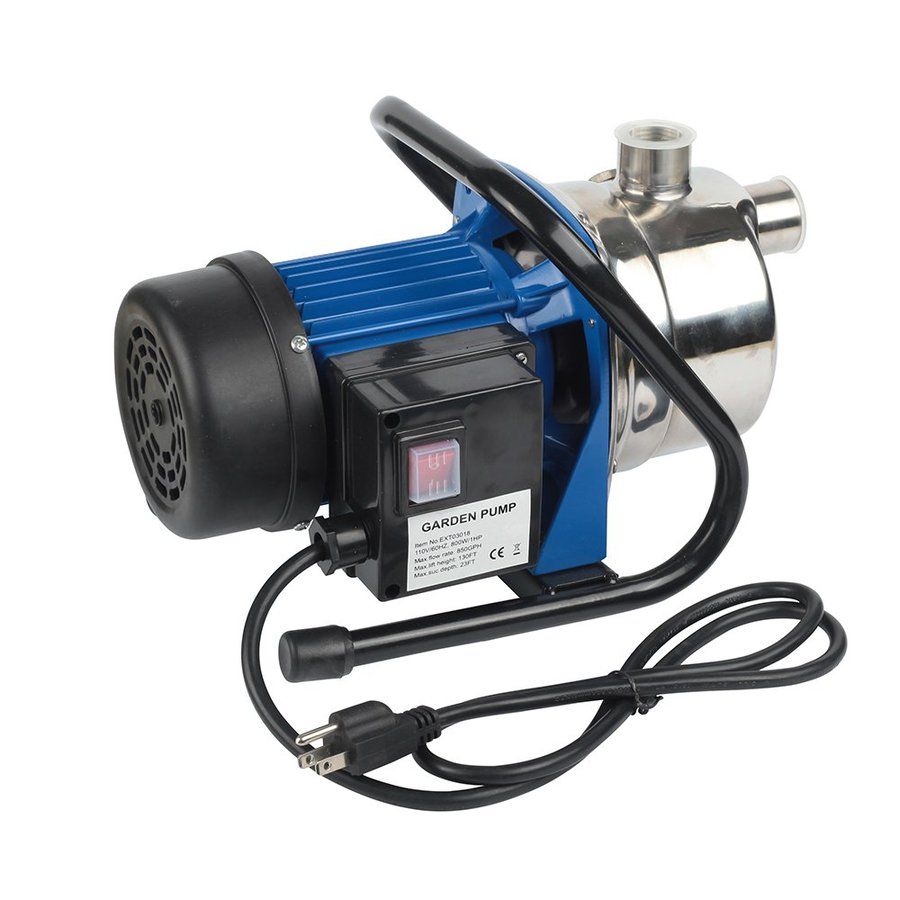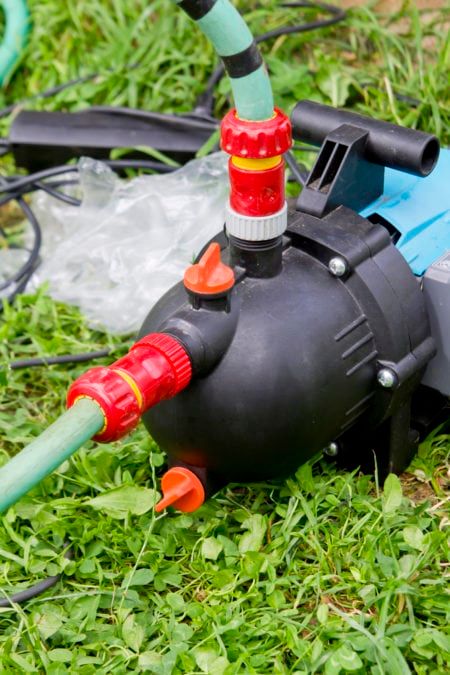If you are the proud owner of a lush, green lawn, then you know the importance of your watering schedule through the growing season. Unfortunately, in many places, watering your lawn can become an expensive, or even restricted, practice as the season progresses. However, you can take matters into your own hands if you have any sort of body of water on your property or near enough that you can get permission to use.
Sprinkler pumps are specialized pumps designed to provide a high flow of water without a high amount of pressure. This is the solution you need to take advantage of a nearby water source to provide the moisture your lawn and gardens need to look their best. The following buyer's guide and best sprinkler pump reviews highlight popular choices to find what works for you.
*You might also like: Best Lawn Sprinkler: Healthier, Greener Lawns.
5 Best Sprinkler Pump Comparisons
|
IMAGE |
MODEL |
FEATURES |
|
|---|---|---|---|
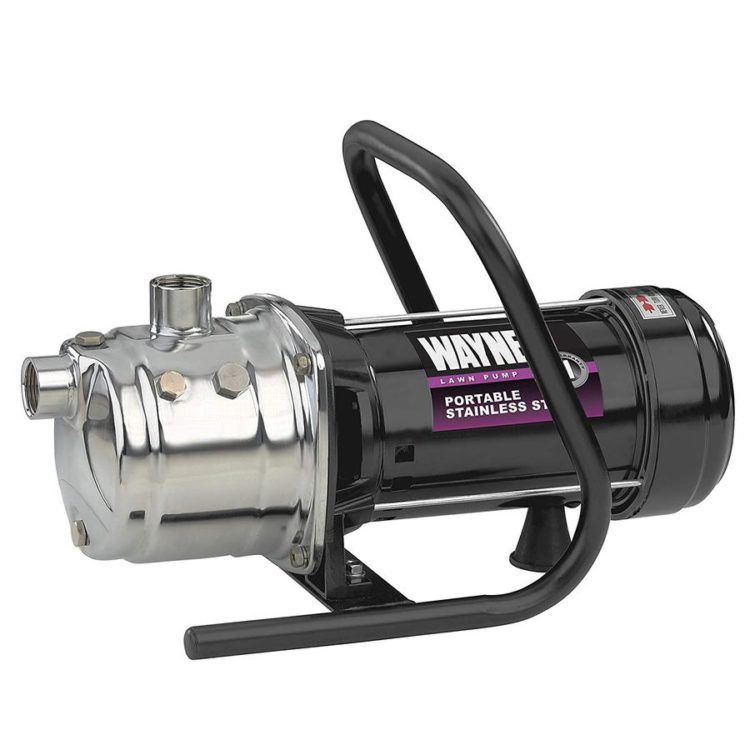
|
WAYNE Portable Stainless Steel Lawn Sprinkling Pump |
|
|
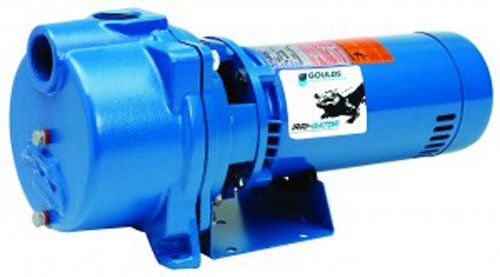
|
GOULDS PUMPS GT15 IRRI-GATOR Self-Priming Single Phase Centrifugal Pump |
|
|
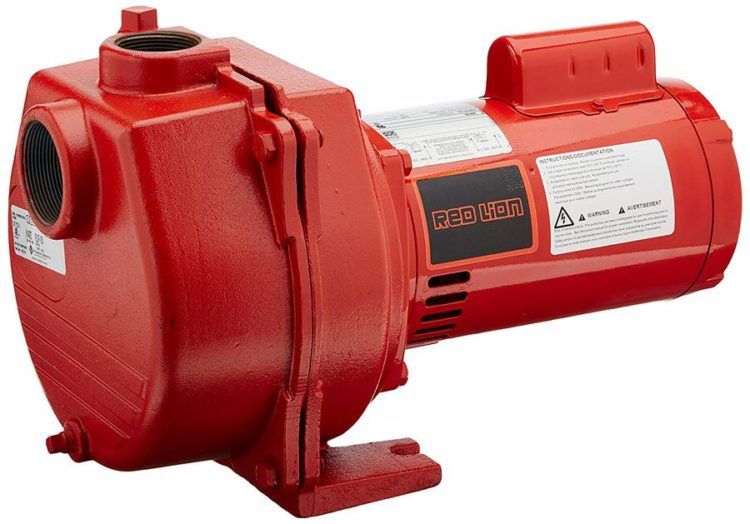
|
Red Lion RLSP-150 Cast Iron Sprinkler Pump |
|
|
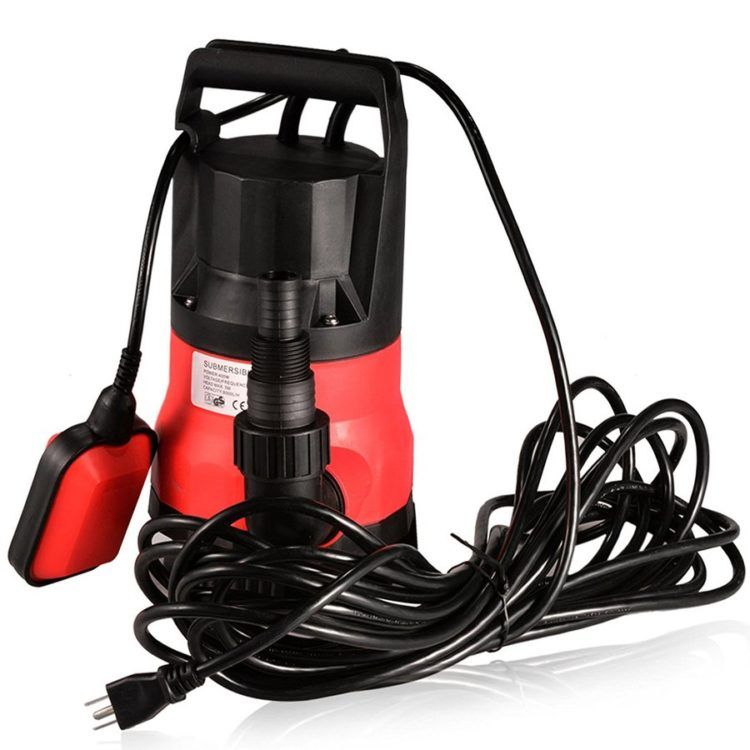
|
Flyerstoy 1.6HP Shallow Well Water Pump |
|
|
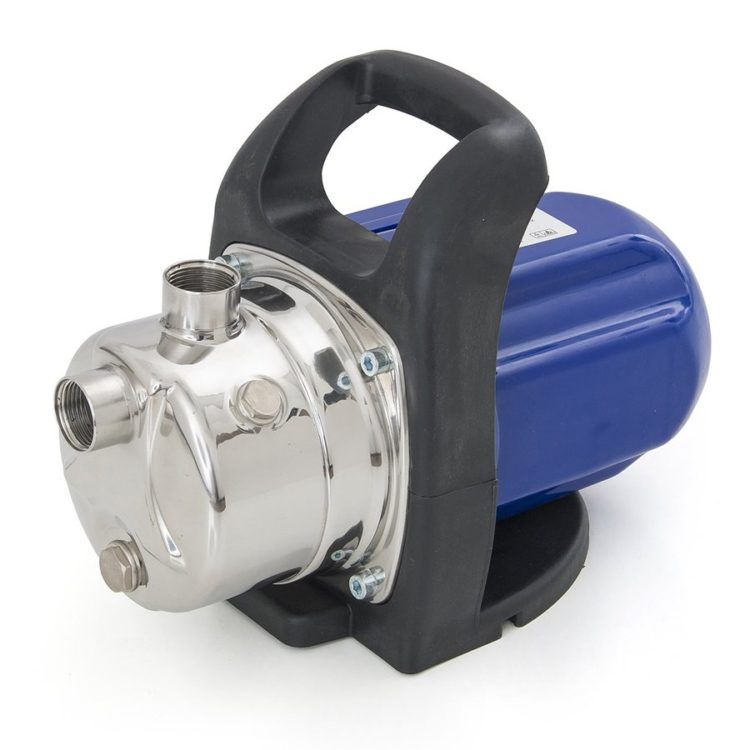
|
ARKSEN 1200W Stainless Water Pump Transfer |
|
What is a Sprinkler Pump?
Although designed for irrigation systems, a sprinkler pump can come in handy for a variety of other needs. In short, a sprinkler pump is a pump specifically designed to work in shallow water to move water from one source to where it is needed. They are designed to be economical, save money, and conserve resources through a steady flow of water without having to use high amounts of pressure.
These pumps are perfect solutions for water irrigation systems and are most often used to feed in-ground sprinkler systems due to the consistent movement of water they provide. These are perfect for homeowners and property caretakers to help keep grasses and gardens growing green and lush.
Types of Sprinkler Pumps
There are actually quite a few different styles of pumps to choose from concerning your particular situation. All move water in various ways and do require an electrical feed to run.
Displacement Pumps
Hand pumps are actually an old fashioned version of this, and today they come in under many different names: piston, diaphragm, roller, and rotary. These are good for very precise flow volumes and higher pressures.
Centrifugal Pumps
An impeller within these pumps spins water at a high rate of speed which then moves through the pump. They cannot suck air, only water, but most hold water internally to ensure continuous flow.
End-Suction Centrifugal Pump
Highly portable, these are a common pump that is usually coupled with an electric motor to ‘push’ the water through, rather than pull it. These are most often used when the water level is higher than the pump.
Submersible Pump
As the name suggests, these pumps must be fully submerged in water to push water through the pump. Although popular for use in wells, they work wonderfully in ponds and streams when placed on their sides.
Booster Pump
Booster pumps are made to be used with existing systems to help ‘boost’ the water pressure already moving into the sprinkler system.
How Do I Choose a Sprinkler Pump?
Even though a sprinkler pump can be used in various ways, the focus of this article is to use it to feed your sprinkler irrigation system. Therefore the following information is specific to realizing your needs for this job.
You have to choose a pump specific to your sprinkler system pressure needs, as well as location to the water source. The following information helps explain what to look for when considering a pump purchase.
Sizing an Irrigation Pump for Pressure Needs
In order to calculate this number, you need to know what your sprinkler head pressure requirements are. These are rated to a specific gallons-per-minute (GPM) and pounds-per-square-inch (PSI). Sprinkler systems almost exclusively use the same head rating across the entire system, so once you have this number, you simply need to multiply the GPM by the number of heads you run at any given time.
For example, 10, 6 GPM heads @ 40 PSI would equal 60 GPM @ 40 PSI. This means your minimum pump system requirement is 60 GPM with at least 40 PSI. You want to size your pump close to this number as too large a system could blow out your sprinkler heads.
Pump Location
Where you place your pump is highly dependent on what your terrain looks like. You need to consider this when making a choice about which pump you want as well since not all can handle the same distances. Take into account your height and distances to move water to ensure you get the product that can work with your unique needs.
Figuring Pumping Height
Suction head, otherwise known as a rise in elevation, defines the amount of lift required to move the water from the source to the pump. As mentioned above, not all pumps do well with this and so it is smart to keep this number under 5 feet. However, some pumps can handle up to 25 feet in lift without any issues.
Distance to System
Your water pressure can be affected by the distance you pump so you will need to accommodate for distances through the size of your discharge pipe. To do this you measure to your furthest sprinkler head. For example, if your head is 100 feet away, then you will need a 1 ½ inch pipe to provide the proper pressure. Longer distances increase this pipe size for every 300 feet you add. So 300 to 600-foot distances would require a 2 ½ inch pipe.
Power Supply
Your pumps can’t run on air alone and so you need to run electricity to your pump. Most pumps are dual-voltage rated and can operate using 115 or 230 volt options, but if you have a larger pump (usually 2.5 horsepower or more) then you will need to consider 230 or 3 phase sources.
You also can run pumps off gas generators, and solar options are also widely available for more rural areas. Be sure to take into account your power sources when determining the best place for your pump, and what power alternatives might exist.
Top 5 Sprinkler Pump Reviews
WAYNE Portable Stainless Steel Lawn Sprinkling Pump
- Horsepower: 1 HP
- Maximum Pressure: 80 PSI
- Maximum Flow Rate: 720 GPH
- Total Head Lift: 180 ft
The Wayne stainless steel lawn pump is made specifically for irrigation purposes and delivers excellent durability in a highly portable package. With up to 25 foot of lift, this pump is capable of running a max pressure of 80 PSI with a max flow rate of 720 gallons per hour (which will reduce with the increase in the total head lift). It uses 1-inch discharge but includes a ¾ inch garden hose adaptor as well.
It runs like a 120-volt electric, making it compatible with just about any power source. Designed to pull from shallow ponds and rivers to feel your sprinkler systems, this is an excellent option to help keep your property well watered.
Pros:
- Does not overheat and runs quietly
- Maintains consistent flow
- Good uphill pressure
Cons:
- Low-quality adaptor
- Needs a shelter - NOT waterproof
Pro tip
If you have a water source within 100 feet you can optimize this little pump for all your irrigation purposes. It also is highly portable and can be used in a variety of other situations.
GOULDS PUMPS GT15 IRRI-GATOR Self-Priming Single Phase Centrifugal Pump
- Horsepower: 1.5 HP
- Maximum Pressure: 125 PSI
- Maximum Flow Rate: 110 GPM
- Total Head Lift: 128 feet
Designed for effortless irrigation, the Goulds Irri-Gator self-priming pump has a total horsepower of 1.5 HP with a maximum pressure rating of 40 PSI and 64 GPM flow rate. Made from cast iron, this pump is designed to be set in place to provide the water flow you need for your sprinklers. With a 1.5 inch outlet, you can essentially get full pressure approximately to 150 feet away.
Electric powered, this pump needs a 230-volt outlet for proper power, and is self-priming, saving you time and effort when getting started. The design also allows for continuous running, the ability to lift 25 feet, plus easy access to the motor means easy maintenance and replacement parts when needed.
Pros:
- Does well with uneven terrain
- Excellent consistent pressure
- Runs quiet
Cons:
- Must be covered to keep from rusting
Pro tip
If you have some concerns about your total head lift, this pump has you covered. The centrifugal design ensures you get the pressure you need when you need it.
Red Lion RLSP-150 Cast Iron Sprinkler Pump
- Horsepower: 1.5 HP
- Maximum Pressure: 47 PSI
- Maximum Flow Rate: 89 GPM
- Total Head Lift: n/a
Red Lion pumps have been around for the better part of a century. The durable cast iron casing and solid pump base allow you to mount it where you need it for a sturdy, dependable job. The 1.5 HP engine can pull up to 25 feet from the source and has a maximum pressure rating of 47 PSI and an 89 GPM flow rate. The 2-inch suction hose and discharge hose allows you to get water up to 150 feet away.
Able to run off of 115 volts or 23 volts, this is a versatile tool that provides a continuous flow of water with no additional priming after the first fill. Although designed for outdoor use, it should be protected from the elements for longer life.
Pros:
- Primes instantly and easily
- Runs quiet
- Dependable and powerful
Cons:
- Wiring access is cramped and small
Pro tip
If you have various jobs you need to get done with a pump, this is an awesome choice to consider. Despite being made to be mounted, it is highly portable and easy to use.
Flyerstoy 1.6HP Shallow Well Water Pump
- Horsepower: 1.6 HP
- Maximum Pressure: 66 PSI
- Maximum Flow Rate: 700 GPH
- Total Head Lift: 137 feet
The stainless steel and cast iron design of this submersible pump have a 1.6 HP engine with a maximum of 66 PSI water pressure and a 700 gallon per hour rating. This is a great all around pump that works great for a sprinkler system but also is easy to set up and use for any sort of water transport, whether you need to fill a pool, aquarium, or flood irrigation. Maximum suction height is 23 feet, and an automatic on/off is in place to sense the presence of water to keep from a dry run.
Reinforced sealing ensures the submersion over and over without corrosion or rusting. It also has a float for when it is submerged so debris is not sucked into the system, although it has proper filters for this purpose.
Pros:
- Great aerator, does not clog
- Easy self-prime
- Excellent output
Cons:
- Takes time to prime the first time if not submerged
Pro tip
If you are looking for a good all-around pump that has great water transport capabilities, but also can be submerged, this is worth taking a closer look at.
ARKSEN 1200W Stainless Water Pump Transfer
- Horsepower: 1.5 HP
- Maximum Pressure: 63 PSI
- Maximum Flow Rate: 925 GPH
- Total Head Lift: 150 feet
The Arksen 1200W Stainless pump provides 1.6 HP with the capacity to move 925 gallons per hour with a maximum 63 PSI pressure rating. This is a powerful, compact little workhorse at a great value, and includes 1-inch hose fittings for moving water up to approximately 100 feet away. It also is extremely versatile and easy to set up and use quickly for a variety of other jobs.
As a boost pump, it also works great for larger field irrigation in agriculture, as well as to add to your home pressure. It does need to be primed the first time, but after that is good to go! The 150-foot head lift is also helpful as you can pull form steep terrain.
Pros:
- Can adapt to use your own garden hose
- Doesn't seem to lose pressure even over 100 feet of distance
- Compact and surprisingly powerful
Cons:
- Must be primed
- Closer to the water source it is, the better
Pro tip
If you need a powerful pump but also are looking for a good value, this is an excellent choice. Boost pressure or use to water your landscaping, even when you have uneven terrain.
Conclusion
If you are looking for an economical way to keep your lawn watered, and have a nearby body of water or stream, then a sprinkler pump is a must. These options help showcase the design and uses of these compact power-houses and are excellent choices for all sorts of water transfer and pressure boosting jobs. Just be sure to protect them from the worst of the elements to ensure longevity, and to bring them indoors for the winter if not in use.
Let us know what you think below, and what comments you may have pertaining to these models. And, as always, please share.

